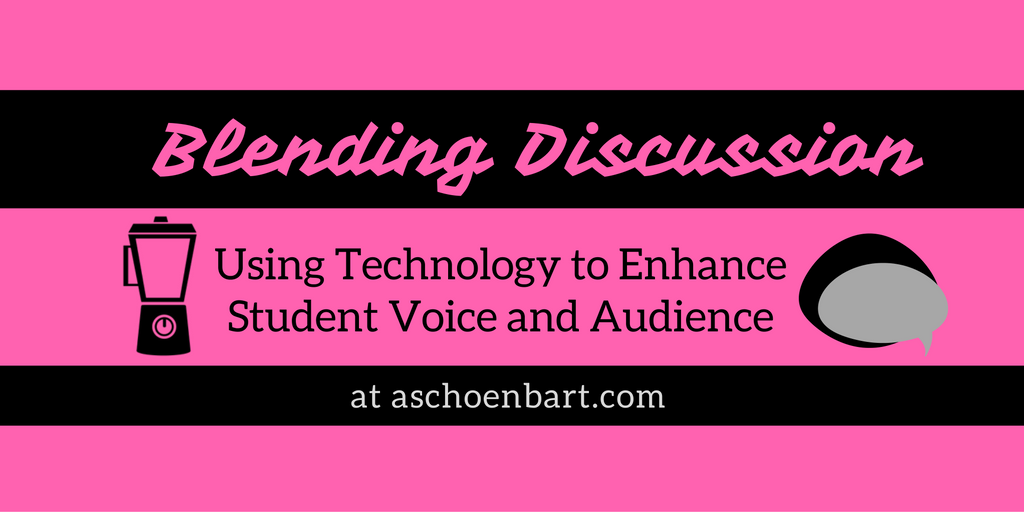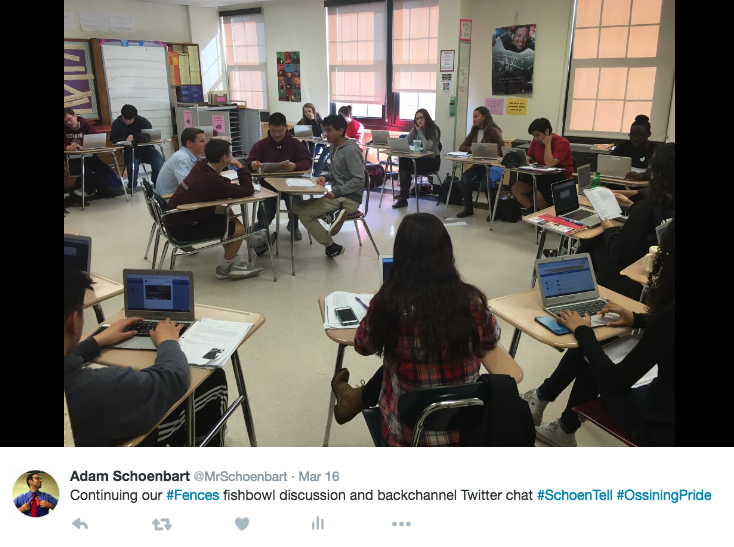Blending Discussion: Using Technology to Enhance Student Voice and Audience


Today we began a week of discussion and analysis of Art Spiegelman’s graphic novel, Maus II. In the past, I’ve broken the text down for students with a chapter a week to complement our study of Elie Wiesel’s Night. This year, I decided it was time to change things up--and I was excited. We would focus on discussion and critical thinking and devour the text in a week, with a chapter a day. I was excited to explore a high-interest text with a focus on students’ voices and ideas.
But after ten minutes of discussion--of pretty strong discussion--I noticed that the same handful of voices were all I heard. Eight awesome students shared high level observations, discussed symbolism, and deconstructed the comic book form. Three or four more jumped in from time to time, and a small group just didn’t say a word. And today, I let that happen. I made it okay to sit back and listen. After all, some of these students were clearly engaged--I saw note taking, head nodding, and the wheels of critical thinking turning. But not everyone.
And while public speaking, discussion, and clear communication is essential in all classes, I think we need to find ways to engage students on multiple levels. That’s where technology can be an asset: to amplify every student’s voice for an audience. I value the traditional discussion, but also see the importance in teaching students how to have meaningful discussion in online spaces to complement and to supplement face-to-face conversation.

This week, my students will explore all types of discussion techniques, from today’s full class discussion, to a face to face/blended hybrid, online discussion, and a full live Socratic seminar. They each have their strengths and weaknesses, but I hope we can evaluate them and our progress throughout.
With technology and blended discussion, though, every student has a specific and personal way to contribute at their level. Students don’t need to wait for their turn, to be called on, to have the best idea, or to gain control of a conversation to make their point; they can use backchannels and online tools to share and collaborate all at once. Online, each student can share in the discussion 5-10 times; in class we could never hear each voice nearly as much. Student voice is enhanced for a real audience creating copies of notes and accountability for all involved.
And the handful of students who didn’t participate today? I know they will tomorrow. We will break through the silence together in all types of learning, but in our online discussions students can participate in different ways--ask questions, respond to ideas, share quotes, and more. Somehow responding to everyone seems to reduce the pressure and stakes of responding to anyone person or idea in particular.
I don’t want to discount the value of face-to-face discussion, presenting, and meaningful conversation. It’s a dying art for many of today’s students. But I also don’t want to ignore how technology can change the way we’re having those conversations to make them more engaging and powerful.
Tools and ideas to transform education. Sign up below.
Next time, I’ll come back with my favorite tools for blended discussion and reflect on our work from this week. We will explore the successes and challenges of our week of discussion.
What are your favorite strategies and tools for promoting meaningful discussion in your classroom? Share in the comments or on Twitter @MrSchoenbart.
cross posted at www.aschoenbart.com
Adam Schoenbart is a high school English teacher, Google Education Trainer, and EdD candidate in Educational Leadership. He teaches grades 10-12 in a 1:1 Chromebook classroom at Ossining High School in Westchester County, NY and received the 2014 LHRIC Teacher Pioneer Award for innovative uses of technology that change teaching and learning. Read more at The SchoenBlog and connect on Twitter @MrSchoenbart.
